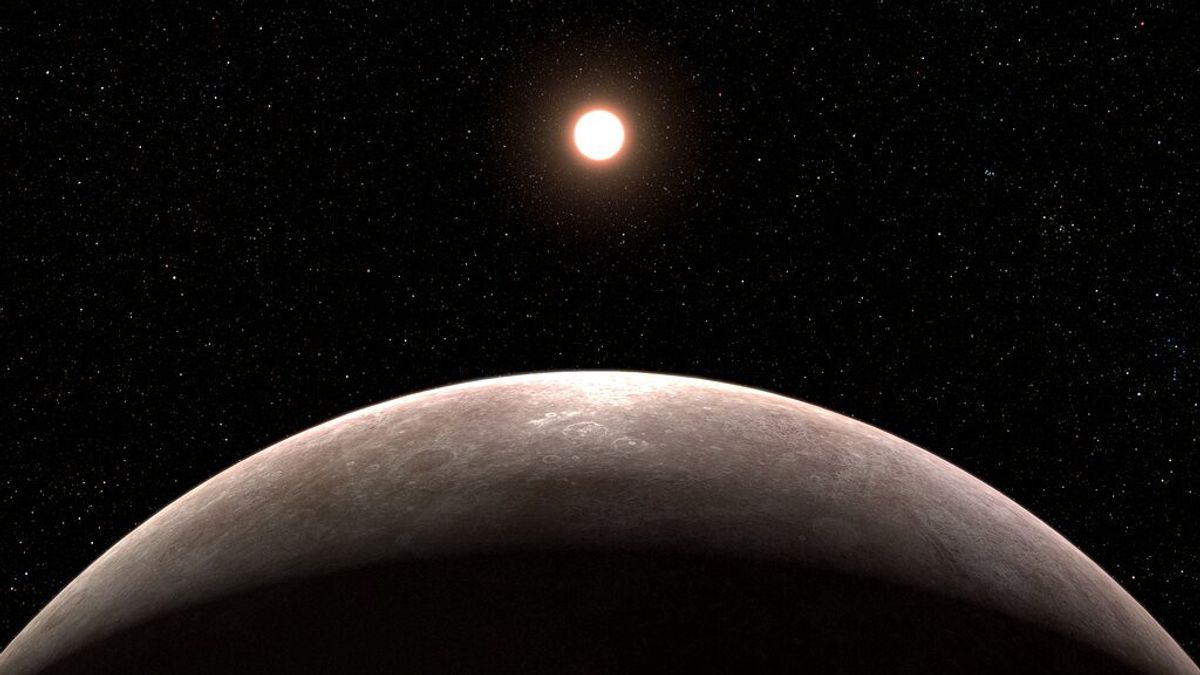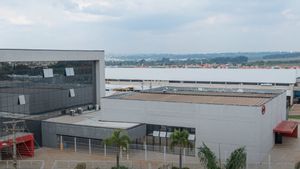JAKARTA - The James Webb Space Telescope again demonstrated its capabilities by discovering its first planet, and this rocky world is the same size as the Earth.
Classified as LHS 475 b, this exoplanet is about 99 percent the diameter of Earth, and although it is terrestrial, scientists do not yet know whether it has an atmosphere.
This planet is a rocky world like Earth, it is located only 41 light years away, which is a great distance but still relatively close in astronomical terms.
However, it is not known for certain whether it is habitable, as it is closer to its red dwarf parent star and, therefore, several hundred degrees warmer than Earth. Astronomers say the planet LHS 475 b completes its orbit in just two days.
"These first observations of an Earth-sized rocky planet open the door to many future possibilities for studying rocky planetary atmospheres with Webb," said Mark Clampin, director of the Astrophysics Division at NASA Headquarters in Washington, USA.
"Webb is bringing us ever closer to a new understanding of Earth-like worlds beyond our Solar System, and its mission has only just begun."
SEE ALSO:
The Webb Telescope is launching on Christmas Day 2021 and will serve as a replacement for the long-running Hubble Space Telescope.
With the advanced technology of the Webb Telescope, astronomers can for the first time investigate the atmospheric conditions of the exoplanet. NASA scientists will try to assess what is in the atmosphere of planet LHS 475 b by analyzing its transmission spectrum.
According to scientists from the Johns Hopkins University Applied Physics Laboratory, USA, Jacob Lustig and Yaeger, this planet may not have an atmosphere, there are some atmospheric compositions that have not been ruled out, such as an atmosphere of pure carbon dioxide.
"In contrast, an atmosphere of 100 percent carbon dioxide is much denser, making it very difficult to detect," said Lustig-Yaeger.
Launch Metro, Friday, January 13, more precise measurements are needed for the team to distinguish a pure carbon dioxide atmosphere from no atmosphere at all. Scientists are slated to get additional spectra with upcoming observations this summer.
"We are at the forefront of studying exoplanets that are small and rocky. We are just beginning to scratch the surface of what their atmospheres are like. And that is only the first of many discoveries that will be made, he added. With this telescope, rocky exoplanets are a new frontier." said Lustig-Yaeger.
NASA announced last November that the Webb Telescope had successfully uncovered the atmospheric makeup of an exoplanet in never-before-seen detail, and milestones suggest it could search for alien life too.
The Webb Telescope's powerful instruments captured atoms and molecules, along with signatures of active chemistry and clouds, features that the Hubble and Spitzer Telescopes could not detect when they observed an exoplanet and which had evidence of life.
The English, Chinese, Japanese, Arabic, and French versions are automatically generated by the AI. So there may still be inaccuracies in translating, please always see Indonesian as our main language. (system supported by DigitalSiber.id)
















